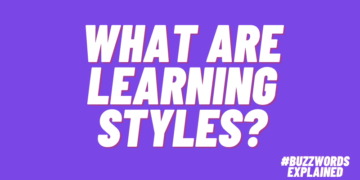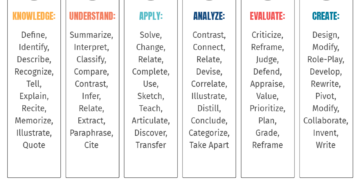Overview:
Subbing allowed this educator to reclaim his time and save his mental health after having a stressful school year.
I never planned on becoming a recovering subbing educator. It just happened. It was the end of my final year as a full-time teacher. One week earlier, I had led what I thought was a killer lesson about The Outsiders. I made all the right teacher moves. My students activated multiple kinds of learning. There was scaffolding, there was differentiation, there was everything you wish you could include in your plans all the time, and everything you hope like heck actually made it in when your principal shows up for a formal observation, which, as luck would have it, she did. When our scheduled debriefing arrived, I was brimming with confidence.
Sound familiar?
By the time my principal left an hour later, I was in a full-blown identity crisis. Rather than affirmation of the work I had put in, the evaluation instead felt like a laundry list of one critique after another – some surely deserved, of course, but others that struck me as either unfair or simply missing the bigger picture. After what had been the most challenging year of my career, this was the evaluation that broke the camel’s back. I had entered ‘recovering educator’ mode.
I’m sure you know what I mean; if you haven’t been there yourself, you’ve worked with someone who has. It’s the point of no return, when everything that drove you to teaching in the first place no longer feels sustainable. It’s when you begin counting down the days – to the end of the year, to whatever it is that comes next. When you subconsciously begin preparing to leave the teaching profession entirely.
Recovered Educator
Except, here’s what I quickly realized: I didn’t want to leave education. I didn’t want to leave schools, and I certainly didn’t want to stop working with students. As I thought more about it, I recognized my next step. By the time the following school year began, in fact, I had returned as a fully recovered educator. I was a substitute.
It turns out I found the perfect position for me, the sweet spot between what was driving me personally and professionally. I’ve often been asked if I have any interest in getting back into full-time teaching, and my answer is always the same: no way, not a chance – I can’t even imagine it. Subbing is just right for me, and it’s left me in the best place for a formerly recovering educator: still gratified by the work, still enjoying time in the classroom, and still making a difference in kids’ lives. Here are 5 reasons subbing might be right for you, too.
Better work/life balance
Let’s do a quick thought exercise. It’s 3:30 on a Tuesday afternoon or 4:00 on a Wednesday, or whatever time your school day ends. You lock up your classroom and walk out to the parking lot. Then, you toss your work bag into your car and drive home and pour yourself an at-home happy hour glass of wine because, hey, you deserve it! Finally, you pull your favorite record from the shelf and put it on the turntable, before plopping yourself on the couch and —
Are you laughing yet?
One more: It’s Sunday morning, and you’ve woken up without an alarm. The sun is shining, the birds are chirping, the day awaits. Will you take your bike out on an adventure? Maybe check out a new art gallery downtown or treat yourself to an afternoon of Sunday Funday karaoke? The possibilities are —
How about now?
The truth is, there’s a good chance you’re not doing any of that because, for so many of us, the work doesn’t end. When you come home at 4:00 on a weekday afternoon, how long do you relax before shifting into preparation for the next day? What percentage of the weekend do you really allow yourself to detach from your job?
This is the number one benefit to subbing: when the day ends, the work is done. Your evenings are yours again, and your weekends are yours again as well. All the hours currently not spent on everything else that matters to you (family and friendships, physical recreation and hobbies, sitting on your couch with a glass of wine and your favorite record on the turntable) return to you when you leave the responsibilities of full-time teaching.
Improvement in mental health by subbing
For me, the main contributor to teacher burnout was my increasing difficulty leaving it behind at the end of each day. I know I’m not alone in this, and I also know it doesn’t make me some sort of super-educator or hyper-empath. It just means I couldn’t compartmentalize.
Driving home, I’d be thinking about everything that happened that day. Making dinner, I’d be thinking about everything that happened that day. Lying in bed, I’d stare at the ceiling and think about everything that happened that day. I would wake up and resume thinking about everything that happened the previous day, until I drove to school and began thinking about everything that would happen that new day instead.
Not anymore. Students were acting like fools? Once the clock hits 4:01, I’ve forgotten about it. Teacher left behind an incomplete sub plan and the objectives weren’t met? Well, I did the best I could. Sub plan was great but I dropped the ball on the instruction? Ditto. It’s done. And the next time I’m in that classroom, we’ll start again fresh.
Oh, and all the school politics, the chatter between teacher and teacher or teacher and administrator or teacher and… well, whoever? None of it impacts you as a sub. Go ahead and sleep easy at night. Tell ’em I said you could.
(One more change in this regard is, admittedly, both a plus and a minus. The extracurricular stuff that students are always dealing with, and that we as educators take on as well, is no longer your responsibility. Again, this isn’t just a good thing; nobody chooses teaching for the simplicity of the job, and helping students navigate the complexities of life is part of both the requirements and the rewards. I spent most of my teaching career working with predominantly Latinx student populations, including in the aftermath of the 2016 election and the duration of the Trump administration. I’ve supported students who were afraid of deportation, who confronted racism on a daily basis, who had three dozen things at any one time that were more urgent than their classwork. I was driven by that and remain so, but it took its toll on me emotionally. As a sub, it’s easier to step away.)
Cut to what matters
When I began my career, I was wide-eyed and bushy-tailed, thrilled to be in the classroom and eager to volunteer for responsibilities outside of it. I wore my identity as a teacher on my sleeve and relished any role that offered the opportunity for self-realization. As the years went by, though, and the shine wore off, I started to note just how much extra was being asked of me – all the tasks that took time and energy away from my ability to best serve my students.
In addition to countless small duties like phone calls home and the hyper-incessant tracking of data points, here are some of the biggies I get to bypass as a sub:
- Department/grade-level meetings: While the rest of the hallway is tracking academic progress and collaborating on behavior plans, I’m reenergizing during the teacher’s planning period, hands behind my head and feet up on the desk.
- “Teaching to the test”: I’m still responsible for whatever lesson plan has been left behind, of course, but I never have to dovetail out of my unit trajectory to accommodate a skill that will only be used once.
- Reinventing the wheel: Call it whatever you want, and imagine whatever “wheel” you were asked to reinvent the last time you were asked to reinvent it, but all that time spent on busy work falls on someone else now.
All those tasks sapped my energy as a full-time teacher, leaving me depleted when my students arrived. As I used to put it, too much about teaching got in the way of what I loved about teaching, with too many stakeholders (administration, parents, district-level initiatives) impacting the only thing that mattered to me in the classroom – my students.
As a sub, everything I do from arrival until departure is for the benefit of the students, with nothing getting in the way of my ability to deliver instruction, manage behavior, and provide support on a group and individual level. None of the other considerations that factor into Optimal Classroom Time enter the calculation.
Reclaim the good vibes by subbing
This probably seems counterintuitive, and I get it. I used to see my own fair share of awful sub reports, detailing how my classroom of little Jekylls turned into a roving band of Hydes for the poor, sacrificial lamb sent in my absence. Why on earth would you sign up for that?
I won’t lie and say that the knucklehead behavior disappears just because you’re on the other side of the equation, but the path to fun as a substitute is straight-forward: spend a long stint or even just a handful of days in one classroom, then do the same in another at that same school. Once you’ve established a presence there, students will feel like they know you, and they’ll be thrilled the next time you show up at the start of the day. If they happen to also be in the particular class you’re covering, they’re going to lose their collective minds.
Now, I can already hear the cynical voices mocking me — of course they’re excited to see you, you’re a sub! — but this isn’t just about the possibility of a free day. The truth is, while it’s easy to be a fun and energetic sub, it’s not what most students are used to. If you act like you’re happy to be there (and once you discover your favorite assignments, you will be), the students will feed off that energy. They’ll be happy you’re there as well.
Realities as a Substitute
Even more relieved will be the absent teachers themselves, because they know their classroom won’t devolve into a madhouse while they’re gone. Halfway through my first year subbing, I had teachers regularly reaching out to me in advance for days they’d be needing coverage. Most wouldn’t even bother creating a sub-plan; they would just leave their regular plan and trust that I could communicate the lesson effectively. Classroom momentum wouldn’t come to a screeching halt simply because they needed to care for a sick child or take a mental-health day or deal with whatever else had come up.
Emphasizing personal gratification might seem trivial compared to the loftier ideals we all entered the profession with, but the delight that colored the first few years in the classroom is still attainable as a sub. The sense of value everyone deserves to feel is attainable as well. After the last evaluation I sat through as a full-time teacher, I never take that appreciation for granted.
Build towards the future
No matter how much we wish it weren’t true, no matter how strong our convictions used to be, the fact remains that sometimes teaching just isn’t our life path. While I applaud teachers who go in search of more fulfilling long-term prospects, I’ve seen too many simply choose the easiest or safest landing pad – getting their real estate license because a cousin talked them into it, or driving for Lyft because it was the quickest way to begin making money again. There’s nothing wrong with wanting security, but this misses a golden opportunity to pursue something bigger.
One final reason subbing might be the right fit for you, therefore, is simply because it might be the right fit for you now. Subbing is the perfect stop-gap on your way to a different job, and a good place-filler as you test the water of some other career.
In addition to the day-to-day flexibility needed to take interviews and follow other leads as they come up, subbing works as a temporary option because the pay isn’t necessarily prohibitive. Switching to part-time is a financial shock at first glance, but the outlook is actually a bit more promising. Your income will depend on your district, but as a licensed teacher, you’ll already be at the upper end of the substitute pay scale. In Denver Public Schools, for instance, substitute teachers who possess a professional license are paid $215/day. Working an easy 15 days each month earns a $500 bonus, which, when spread over those 15 days, is another $33, totaling just under $250/day.
What I like to tell people is that I get paid more or less on par with full-time teachers for the days that I work. The only difference is that a full-time teacher’s salary considers them to be working on weekends, over breaks, and during the summer as well.
Since you won’t be able to sub on all the days when there’s no school, you’ll potentially need to supplement your income with a side hustle – tutoring in the afternoon, bartending on the weekends, building your writing portfolio (hello!), or whatever else suits you. Even if this feels like a step backward, just consider it a means to an end: a source of steady income that will keep you afloat on your way to something more fulfilling.
*** *** *** *** ***
The Recovering Educator
Look, every recovering educator I’ve met, both while subbing and as a full-time teacher, has had two defining features. The first is that they don’t want to leave education; after all, nobody enters the profession simply to bail at the first sign of trouble. The second is that none of us are on the way out because of the students. For many, in fact, the students are why we stuck around as long as we did in the first place.
Just because parts of the job may have burnt you out, though, doesn’t mean you have to give up the rest, and just because you want to support students doesn’t mean you have to be a martyr. Subbing allows me to keep the parts of teaching that I love while cutting the ones I no longer have the fire for. It brings joy back to the job while allowing me to remain in students’ lives.
Every teacher deserves a job that supports their whole person, and a quality of life that maintains livability. This looks different for everyone, but I would argue that improved work/life balance and mental health, along with an emphasis on joy, appreciation, and the things that truly matter, fill a significant portion of all of our individual buckets. For me, when I added the ability to pursue a more rewarding long-term future, it was a no-brainer. Maybe it is for you, too.

Zachary D. Shell is a guest teacher and freelance writer based in Denver, Colorado, whose work has been published in Hinterland, Blood & Bourbon, and Adelaide Magazine, among others. If he’s not singing with his barbershop chorus, you can find him writing at his favorite local coffee shop. Now. You can find him there right now.




















